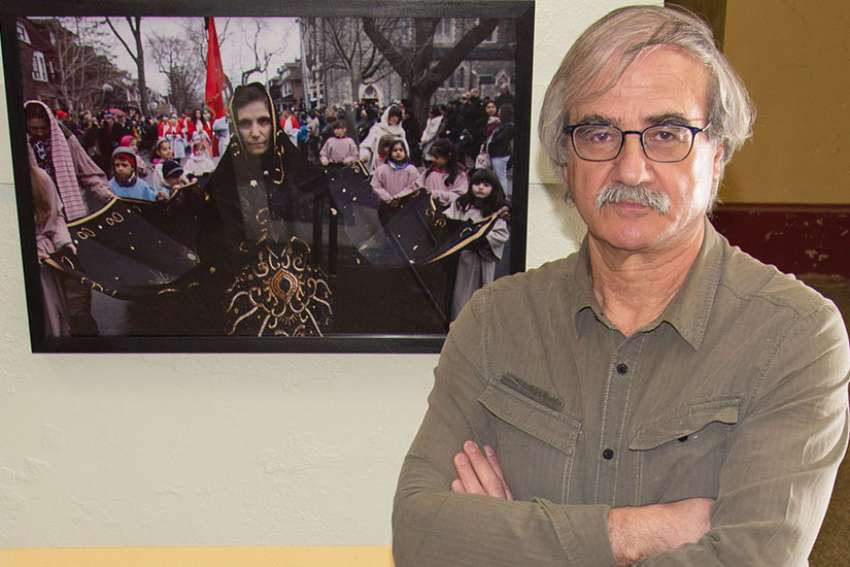“He’s managed in a good number of them to capture people’s faith in its simplicity,” said Zammit. “There are all these different ways we encounter Jesus on the road to the cross.”
Pietropaolo grew up in St. Francis of Assisi parish and has been photographing the College Street Good Friday procession for almost 50 years.
When he started photographing the event he was just a teenager with a camera, learning the craft. Today, Pietropaolo is a documentary photographer with an international reputation, half-a-dozen books to his name and a solid resumé of gallery exhibitions behind him.
Last year, Pietropaolo finally saw his longest running documentary project published in book form. Ritual, from British art publisher Black Dog Press, collects the best of Pietropaolo’s Good Friday photographs dating back as far as 1968 on just over 200 pages, available at vincepietropaolo.com for $39.95.
At a launch for the book at Toronto’s Italian Cultural Centre, Zammit invited Pietropaolo to display some of the photographs at St. Francis of Assisi, just south of College Street on Mansfield Avenue. The photographs went up April 3 and remain through Holy Week in the church where the Good Friday procession starts and ends (for times, call 416-536-8195).
Through the years, Pietropaolo has watched the solemn procession evolve.
“Everything changes, but the essence of the procession doesn’t change. The essence is carrying the dead body of Christ in the streets of the city and venerating Him,” said the photographer.
These days, Pietropaolo is no longer the only guy with a camera walking the route. Crowds of gawkers come with everything from cellphones to expensive, sophisticated digital movie cameras. Pietropaolo worries they are treating the event like a parade or spectacle.
“A procession means that you actually partake of it, you participate,” he said. “You don’t just stand on the sidelines and watch. A parade is something you watch from the sidelines.”
In Toronto’s Little Italy, people disagree about whether the Good Friday procession started in 1955 or 1953. It started at St. Agnes Parish — then an Italian parish and now Portuguese — but moved with the Italian community to St. Francis of Assisi. Inspiration for the procession was the discovery of a statue of Jesus at St. Agnes which had been mysteriously walled off into a kind of hidden closet in the basement of the church.
Parishioners enthusiastically cleaned and painted the old statue. At that point the poor Calabrian and Sicilian immigrants thought a procession was the will of God. Their pastor wasn’t so sure.
“The priest said, ‘No, no. You can’t have a procession. This is an Anglo-Saxon city. You don’t do processions,’ ” said Pietropaolo.
The will of God and the people prevailed and the procession began in an alleyway behind St. Agnes. By the 1960s it was too big for the alley and made its way out onto College Street. For years, Anglo-Saxon Toronto refused to acknowledge the procession, or stop traffic for an hour. Pietropaolo has pictures from the 1970s showing streetcars and trucks running dangerously close to the procession.
This year, the parishes of St. Agnes and St. Francis of Assisi, Italians and Portuguese, are jointly participating in the procession starting at 3 p.m. This public devotion in the heart of Holy Week remains an essential feature of the faith of parishioners, said Zammit.
“It gives our people an identity — a sense of being the people of Jerusalem, a sense of being present at the passion,” he said.


